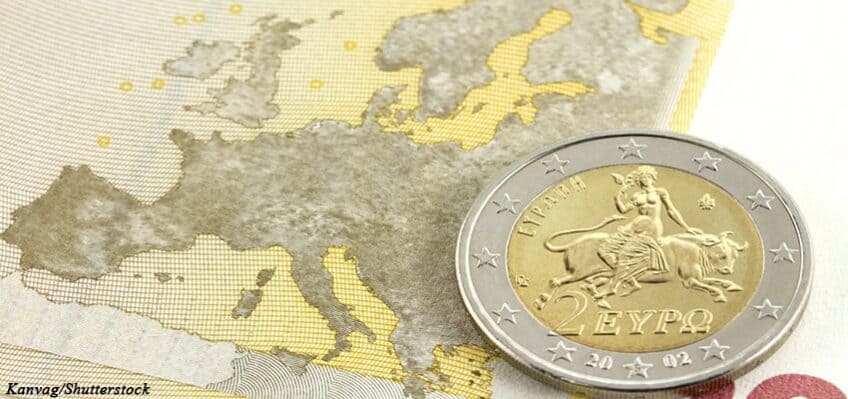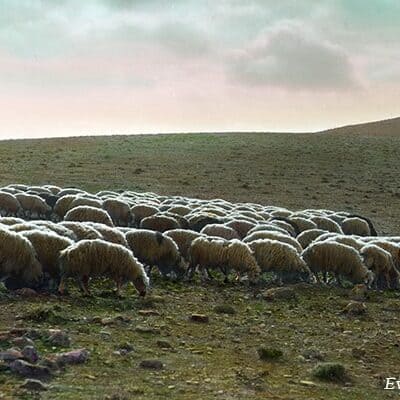The great God of the universe who created all that is, inspired the Bible in its entirety from Genesis to Revelation. Within it are precious gems of truth laid deep inside for us to dig out. He has constructed the Bible in a way which is designed to exercise the human mind with the express purpose of ensuring that we inculcate within us His interesting and mighty mind.
Let us dig deep into His precious Word and discover yet more of His truth. In the book of Proverbs, we are told:
“Yea, if thou criest after knowledge,
And liftest up thy voice for understanding;
If thou seekest her as silver,
And searchest for her as for hid treasure;
Then shalt thou understand the fear of the Lord,
And find the knowledge of God” (Prov 2:3-5).
“It is the glory of God to conceal a thing:
But the honor of kings is to search out a matter”
(Prov 25:2).
This includes history that dovetails into prophecy, presenting us with precedents and patterns to investigate. Thereby opening up new avenues of understanding.
Why Prophecy?
Detailed, accurate prophecy, is closely related to Christian living for the following reasons:
• it keeps the bride excitedly anticipating the bridegroom (Matt 25:1-13)
• it leads one to repentance, to God’s Law and to a close relationship with Him (this is the theme of the prophets and the greatest prophet of all, Jesus Christ)
• if we understand the prophecies, we will be in a position to escape the coming terrors which will descend upon the earth. We are charged to watch (this includes watching world events, the condition of the Church and our spiritual states) (Luke 21:36; Matt 24:42; 25:13)
• as we are living in the Latter Days, it behoves us to know the signs of the times and how world events line up with prophecy to enable us to warn a sick and dying world (Ezek 3:17; 33:1-7; Jer 6:17, 27)
• “Where there is no vision the people perish” (Prov 29:18). The RSV translates “vision” as “prophecy”. The Hebrew word “hazon” is translated similarly elsewhere (see II Chron 32:32; Dan 8:1; Ob 1). Should we neglect these futuristic warning words of God, we will perish (see I Sam 3:1; Lam 2:9)
• prophecy is a major proof of the Bible
• prophecy, by its very nature, encourages us to want to dig deeper and deeper into God’s Word, to uncover its precious nuggets.
The Apostle Peter wrote:
“Neither be barren nor unfruitful in the knowledge of our Lord Jesus Christ [about Christ and His knowledge – the Word of God]. But he that lacketh these things is blind, and cannot see afar off …
“We have also a more sure word of prophecy: whereunto ye do well that ye take heed, as unto a light that shineth in a dark place, until the day dawn, and the day star arise in your hearts” (II Pet 1:9, 19. See II Cor 4:6).
Strange Bulls
With the above in mind, let us consider the bull symbolism in Scripture which is replete with typology which portrays spiritual counterparts or future events. This duality of Scripture takes digging and a figurative magnifying glass to find these wonderful and pleasurable treasures. It is not easy to dig deep into the Word of God – it takes some mental exercise and self-discipline.
We find bulls sacrificed during the Feast of Tabernacles (Num 29:12-38) in reduced numbers each day, viz:
Day 1 13
Day 2 12
Day 3 11
Day 4 10
Day 5 9
Day 6 8
Day 7 7
Total 70
Another is counted for the Last Great Day, but of the 70 sacrificed during the Feast of Tabernacles, the Jewish Talmud asks: “To what do these seventy bullocks correspond? To the seventy nations” listed in the mysterious Table of Nations. A footnote reads: “Seventy is the traditional number of Gentile nations, and the seventy bullocks are offered to make atonement for them”.
In Israel, the priests were the ruling class. In God’s sacrificial system, bullocks were offered to make atonement for them (Lev 4:3) while Israel as a nation were also to sacrifice a bullock for national sins (Lev 4:13-14). In contrast a leader was to sacrifice a male goat (Lev 4:22-23) while the common people sacrificed a female kid or female lamb (Lev 4:27-28, 32).
Therefore, the Jewish interpretation of the 70 bulls seems reasonable as they relate to rulers, leaders and nations. In Genesis 10 where we find the Table of Nations, we find, beside the name of Noah, 70 other names, representing the 70 nations: Ham, Shem, Japheth, their 16 grandsons and 51 others. These spread out across the world and all nations and peoples descend from them, becoming the great kaleidoscope of humanity in all its variations and diversity.
Several other scriptures bear this out: in Psalm 68:30 Gentile kings are likened to bulls; as is the arrogance of Assyria (Is 10:13); the rulers and leaders of Edom (Is 34:7) and Babylon as well (Jer 50:27).
We know from the Scriptures that there is organisation in Satan’s Kingdom (Eph 6:12; Col 1:16) which he uses to manipulate and control this world’s nations. One such evil spiritual leader over a nation is described by Daniel as the “prince of the kingdom of Persia,” a very powerful demon (Dan 10:13, 20). These spirit rulers of nations may be the bull demons of ancient mythology –– national gods in the religious belief systems of these civilisations. David himself may have been surrounded and attacked by these vile bull forces when he cried out to God to deliver him from them (Ps 22:12-13, 16, 20-21).
A Woman Rides the Beast
In the Book of Revelation we are revealed a mysterious prophecy about a woman riding on the back of a beast:
“So he carried me away in the spirit into the wilderness: and I saw a woman sit upon a scarlet coloured beast, full of names of blasphemy, having seven heads and ten horns.
“And the woman was arrayed in purple and scarlet colour, and decked with gold and precious stones and pearls, having a golden cup in her hand full of abominations and filthiness of her fornication:
“And upon her forehead was a name written, MYSTERY, BABYLON THE GREAT, THE MOTHER OF HARLOTS AND ABOMINATIONS OF THE EARTH.
“And I saw the woman drunken with the blood of the saints, and with the blood of the martyrs of Jesus: and when I saw her, I wondered with great admiration.” (Rev 17:3-6)
Could the imagery that God inspired John to use have symbolism and meaning that might be found in history? I stumbled across this while undertaking research in the Parramatta public library (located in the geographic heart of Sydney) in 1996. The initial article was sent out to a lot of people and churches including some that then wrote their own versions based on this article, I am pleased to say.
Let us peer briefly into what I researched for the answer.
All over the ancient Middle East we find reference to the bull which is used as a symbol of strength and fertility as well as to bull gods. El, the supreme deity of the decadent Canaanite pantheon, was often called “the Bull El” (he was a fertility god). Baal, the god of fertility, storms, rain and vegetation was also associated with the bull. Similarly, among the Hittites, Aramaeans and Babylonians, the bull gods were a dominant feature of their religions, not to mention the many bull and calf-cults linked closely to the Egyptian god Horus. Cattle cults among the Cushitic peoples of Ethiopia and India may be found to this day! In Mithraism, bull worship was an important aspect of their beliefs.
In Babylonia, figures of bull gods guarded the entrance into temples, houses and gardens (in contrast to the lion of Judah which was utilised extensively in the British Empire). (NB: it has even been suggested that Nebuchadnezzar ate grass like cattle or a bull as outlined in Daniel 4:33). During the Assyrian period a human face was added: at Khorsabad colossal human-headed winged bulls were found at the palace of Sargon II. To the Babylonians these bulls were actually spirits which brought both good and evil upon mankind (demons sometimes bring good upon someone to deceive and to lead astray) and which filled the air where they produced storms and thunderbolts.
Demons may indeed bring good to deceive, followed by evil. Their practices and ministers may appear to be of the light, but in reality they represent the darkness (II Cor 11:13-15) and their fruits follow them. Note also that these bull gods or extremely powerful demons, filled the air which is one of the thoughts Paul may have had in mind when he condemned the “prince of the power of the air” and “spiritual wickedness in high places” (Greek: “heavenlies”) in the letter to the Ephesians (Eph 2:2; 6:12). There may also be another connection to the heavenlies: the bull was identified with the constellation of Taurus of the star Gud-ana – the bull of heaven.
Such bull-worshipping practices were condemned and outlawed in the Bible: Ex 32; Josh 24:2; I Kings 12:28; Hos 8:5; 13:2. The perversions, weird practices and atrocious way of life were such a stench to God that Israel was to eliminate these religions from their land. Unfortunately, this was never successfully accomplished.
In pagan Rome, a bull was killed to enable the baptism of blood at the Roman Taurobolium in honour of the deities such as Mithra. In a trench, the blood of the bull dripped over (or ‘baptised’) the initiate and drenched his body. He even drank the warm blood. Afterwards he came from this literally bloody baptism, believing that he was purified from sins and ‘born again for eternity’. In contrast, a Christian is covered in water at his or her baptism, washed clean metaphorically by the blood of Christ, the Lamb of God, and must then absorb Christ’s flesh and blood by symbolically eating and drinking of it (John 6:53-56), undertaking a process of spiritual growth until finally being born again at the resurrection.
In any event, the mythology surrounding one bull is fascinating. The supreme deity of Greek mythology was Zeus. He had various other names such as Ombrios (rain god), Keraunos (lightning), Pater (father), and Soter (Saviour). In the myths he fell in love with Europa, a beautiful daughter of Agenor, king of Phoenicia (Canaan). Entranced by her, he assumed the shape of an animal or beast –– a white bull –– and mingled with the herds of Agenor while Europa was gathering flowers. When she came upon him, she gently caressed him and had the courage to sit upon his back. Taking advantage of this situation, they went to the shores of the Mediterranean Sea where he whisked her off to Crete at which point he took on his normal form and she bore him 3 sons. This Hellenic tradition, was, however, derived from pre-Hellenic ideas of the moon-priestess triumphantly riding on the sun-bull. Figurines of this lady riding the bull beast may be found throughout the eastern Mediterranean region.
Europa, according to one tradition, was the Great Goddess and mother of the continent of Europe.
This is where prophecy fits in. Turn to the book of Revelation, chapter 17, verse 2. Here we are told about a great whore who sat upon many waters and in verse 3 she also sat upon a scarlet-coloured beast. It may well be that what is meant is that she sat on the beast on the shores of the Mediterranean Sea in similitude to Europa. God inspired these words, and it seems likely that John borrowed the basic imagery or broad concept, at least in part, from this Hellenistic legend well known in that day. Why? Because in so doing He is indicating how thoroughly pagan the roots of the whore and the beast are. Further, as they spring from Phoenicia (land of the Canaanites, many of whom migrated out of Babylon), it shows us a little more of the origin and mind of the religion symbolised by the whore. The Canaanites were the original Babylonians, and as such the carriers of their religion. And the name of Europa shows us that the continent of Europe is deceived and seduced by that religion.
There is a great false church which has dominated Europe for centuries. She is the mother of many other “whores” which have sprung from her in protest. It may be no coincidence that this imagery is now being utilised by the great European Union – apparently the stirrings of the revival of the Roman Empire and its successor power – the Holy Roman Empire. The Roman beast system was ridden by an ancient church which roots are clearly Babylonian/Canaanite.
Almost 40 years ago I found it remarkable that on the cover of Europe magazine (May 1984) a stamp to celebrate European Community landmarks, portraying the beautiful Europa riding the bull, over the sea, assisted by a cherub – there it was in front of me at the newsagent! Seven years later, in the December 1991 Time magazine (page 13) a woman riding the bull while she is holding aloft the European flag is used to picture the European movement. In The Australian 16 September 1996 an article appeared on the approaching European currency (“Europe’s Currency of Hope”). The currency unit symbol of the Bank of Europe is portrayed as a winged bull surrounded by the European stars from the European flag. Winged bull? This was an Assyrian symbol and for those that understand history and prophecy, in Germany dwell the descendants of ancient Assur (Gen 10:22).
The second series of Euro currency notes even contain the face of Europa as a hologram (a security feature) providing a link between modern Europe and its ancient roots.
It may also be more than passing interest to observe that the goddess Inana, more ancient than Europa, was often portrayed as riding on the back of a lion, signifying her co-operation with this terrible beast –– this is an indication of how far back the legend may originate.
Eventually, the ten-horned Beast (these are probably bull horns) will turn upon the Whore and devour her (Rev 17:16). Note the following old poem:
“There once was a lady from Niger,
Who smiled as she rode on a tiger;
They returned from the ride
With the lady inside,
And a smile on the face of the tiger”
Later the beast will be destroyed by Jesus Christ Himself (Rev 19:17-21). Thus ends the Great Whore and the Beast—Europa and the bull imagery finding its final end.










